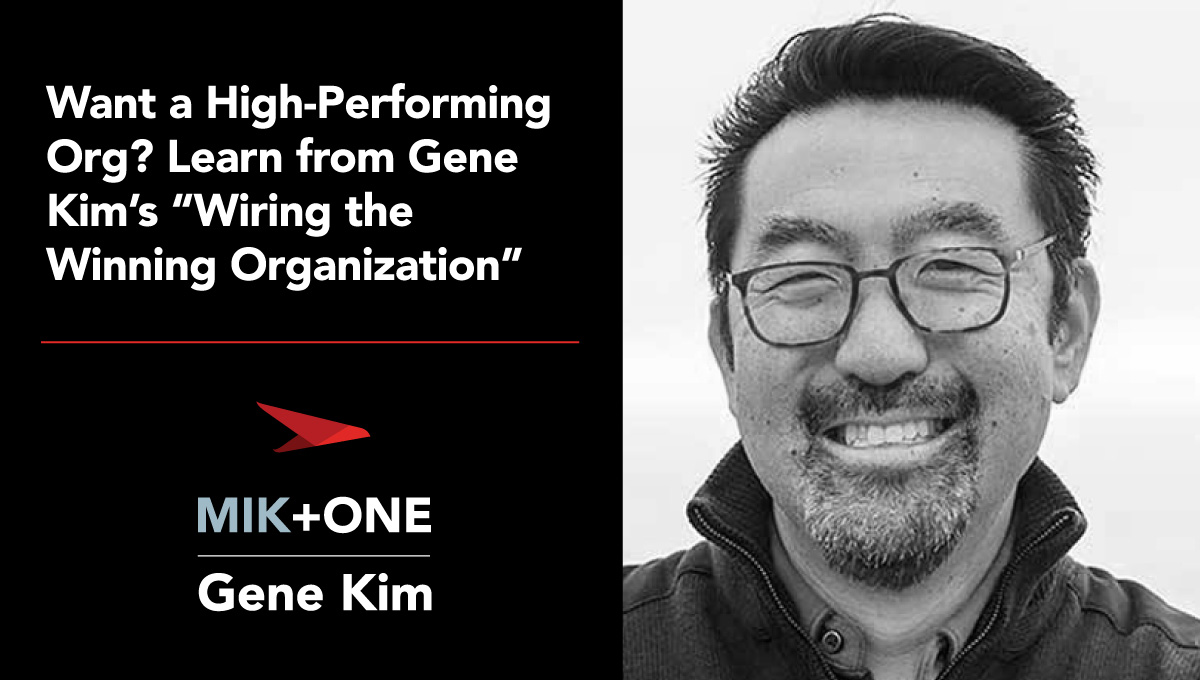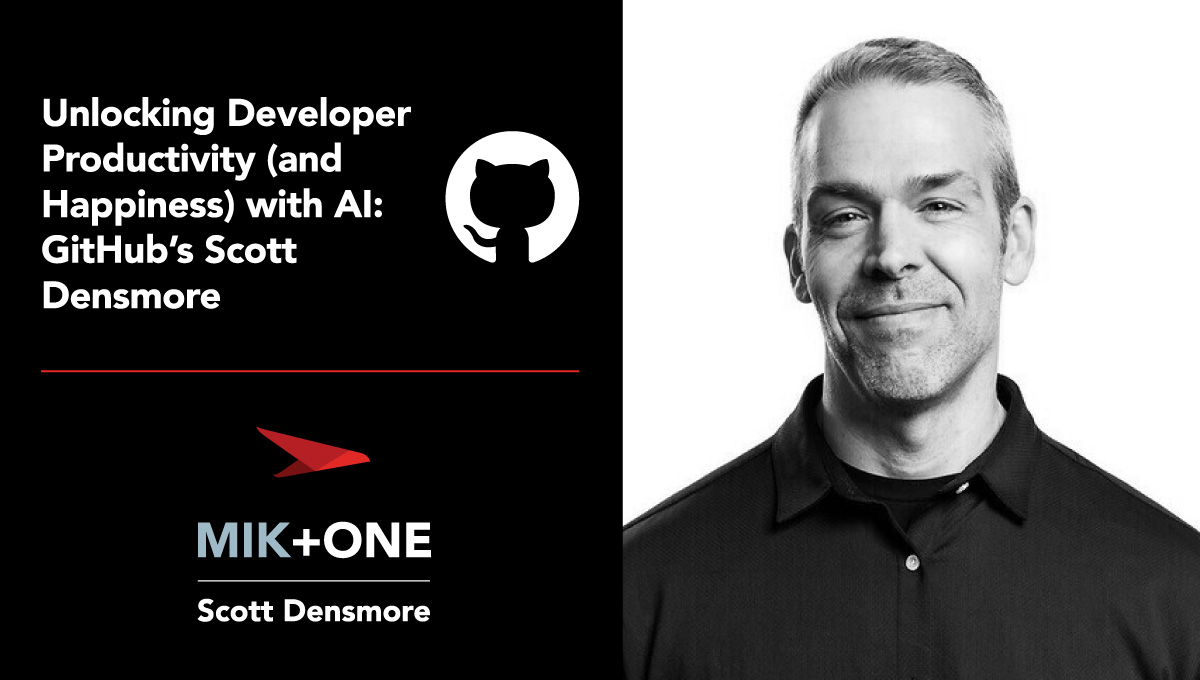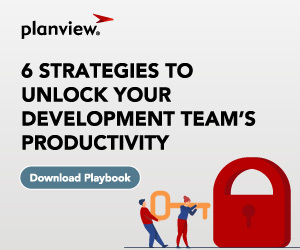
Technology companies want to deliver products better and faster, but as it is, demand often exceeds capacity, visibility is limited, rework is too common, and investments lack focus.
Researchers have invested countless hours of study to understand how organizations can overcome these problems, including Gene Kim and Dr. Steven J. Spear in a recent book: Wiring the Winning Organization: Liberating Our Collective Greatness through Slowification, Simplification, and Amplification.
In their research, Gene and Steven reviewed common efficiency design systems like Lean, Agile, DevOps, and the Toyota Production System.
Their conclusion? Each system is actually an incomplete expression of a simpler, greater idea.
The book describes three basic mechanisms that govern these other methodologies and make it possible for organizations to work in a highly dynamic way.
Dr. Mik Kersten, CTO at Planview and author of the best-selling book Project to Product, recently welcomed Gene as a repeat guest on his podcast, Mik + One. (Quick history lesson: Gene was Mik’s very first guest! You can catch the inaugural episode here.)
Their conversation will give you a glimpse into the new methodology laid out in the book, along with case studies and examples to show how the ideas can be universally applied.
About Gene Kim
Gene, a Wall Street Journal bestselling author, accomplished researcher, and CTO with multiple prestigious awards, began his journey into the world of technology in 1999 when he started studying high-performing technology organizations. He served as the founder and CTO of Tripwire for 13 years.
He has authored six books, including the acclaimed The Unicorn Project (2019), and co-authored the Shingo Publication Award-winning Accelerate (2018), The DevOps Handbook (2016), and The Phoenix Project (2013).
Since 2014, he has been at the helm of the DevOps Enterprise Summit, where he delves into the technology transformations of large, complex organizations.
Best clip
In episode 57, Gene discussed the organizational wiring metaphor used in the book’s title, and he explained the important role that leaders play in creating that organizational structure or wiring by shaping how people connect, communicate, and access resources within the organization.
This wiring dictates relationships and resource allocation, which calls for leaders to align their goals with their teams to achieve efficiency.
“We, as leaders and leaders at every layer in the organization, shape the wiring of the organization, and forever after, it can shape us. Without direct intervention and energetic change, it will shape us. What I love about the organizational wiring metaphor is that we’re saying that it serves the same purpose as a mechanical circuit or an electrical circuit—it dictates how people are connected to each other and how people get what they need.”
Episode key takeaways
Slowification, simplification, and amplification
In Wiring the Winning Organization, Gene and Steven uncover three mechanisms that they believe are the basis of existing process improvement methodologies: slowification, simplification, and amplification. Gene explained these concepts on the show:
Slowification: Making a short-term investment of time to fix or improve something because it will lead to long-term gain.
Gene suggested a couple of practical ways for technology leaders to apply slowification:
- Set aside a certain percentage of time for slowification activities that improve daily work. This might include technical debt resolution, building in more automation to testing, etc.
- Take notes when something unforeseen (like a pandemic) demands faster results, and keep track of the habits, routines, norms, and procedures used that could be applied even when the organization is no longer in crisis mode.
Simplification: Moving the most consequential work and time temporarily from production into planning and practice. This allows teams to partition problems so they can be more easily solved.
Amplification: Creating a system that’s rich in fast, frequent feedback that goes where it needs to go so that people can learn and iterate.
Listen to the full episode for more practical tips and case studies supporting these three principles.
Three layers of work for leaders to know
Gene shared that in their research, their first observation was that work processes are built on a three-layer framework. These layers are:
- Layer 1: Direct tasks or objects
- Layer 2: Tools and technologies used to interact with Layer 1
- Layer 3: Social and organizational structures that facilitate collaboration and interaction among individuals and teams
Any leader wanting to reshape organizational design has to work within these three layers. In the episode, Mik points out that although it’s rare to see changes in Layer 1, generative AI has changed this layer (similarly to how the cloud changed it).
They discussed how leaders need to think through how this will change or has changed Layers 2 and 3 to keep working as a unified whole.
I think the most important question is to find places where people can’t do their work easily and well. . . At some point, there has to be a fearless discussion of, ‘To what degree is the organizational wiring impeding our ability to get done what needs to get done?’
Gene Kim
Read more: Want Your AI Strategy to Win? Don’t Overlook Employee Engagement.
Focus on the forces that enable high performance
Instead of creating environments where employees struggle to perform their tasks due to inaccessible resources or inadequate formats, these concepts empower leaders to establish systems that foster dynamic and efficient work.
Get the full conversation with Gene and Mik here.
Want more?
The Mik + One podcast archives are filled with insightful conversations with other experts about the future of work. If you liked this episode, you’ll like:
And here’s more from Gene:
Subscribe to the podcast to make sure you never miss an episode.







